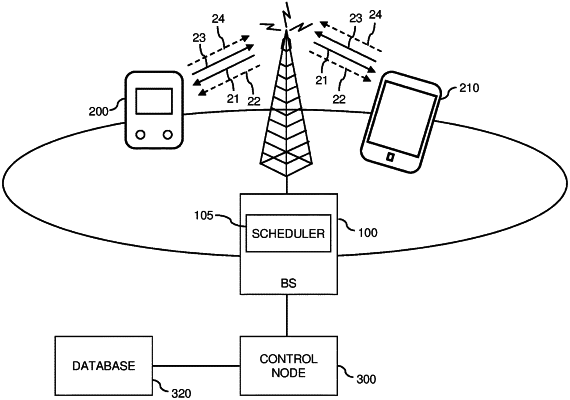| CPC H04L 1/1854 (2013.01) [H04L 1/1812 (2013.01); H04L 1/1861 (2013.01); H04L 1/1887 (2013.01); H04L 1/1896 (2013.01)] | 20 Claims |

|
1. A method of controlling transmission of data blocks between a mobile network and at least one terminal device, the transmission being accomplished on the basis of a retransmission protocol with a first feedback time defining a time interval between transmission of a first data block and transmission of a first feedback message indicating whether the first data block was successfully received, the first feedback time being different from a second feedback time defining a time interval between transmission of a second data block and transmission of a second feedback message indicating whether the second data block was successfully received, the method comprising:
a base station of the mobile network detecting a potential collision between the first feedback message and the second feedback message;
in response to detecting the potential collision, the base station sending control data to the terminal device controlling the terminal device to send the second feedback message on other resources than the first feedback message; and
wherein the first feedback time or the second feedback time is adjusted responsive to the terminal device entering or leaving a low power mode associated with a different feedback time.
|